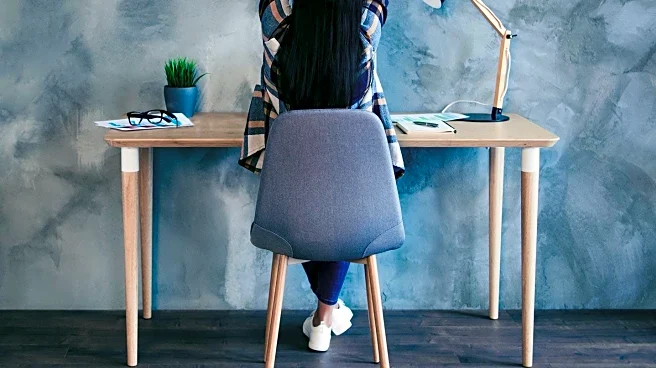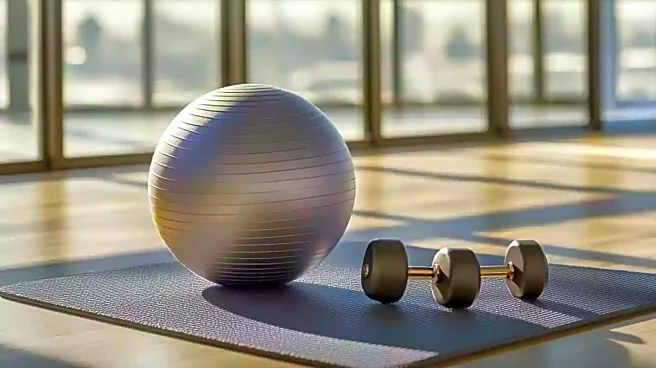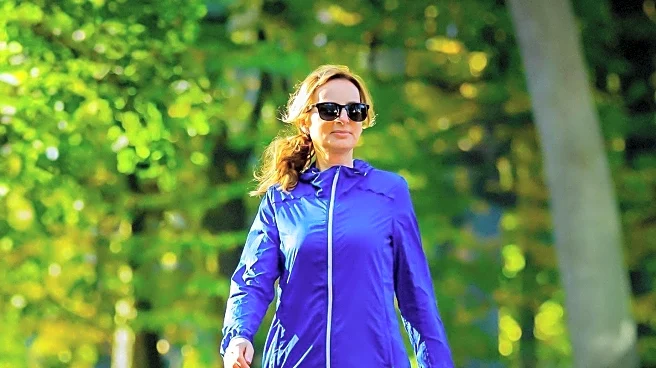What's Happening?
Dr. Joey Masri, an orthopedic physical therapist, emphasizes the importance of stretching routines for individuals who spend extended periods sitting, such as desk workers. He highlights that prolonged sitting can lead to stiffness in the hips and suggests incorporating specific stretches to counteract this effect. The recommended stretches include the pigeon pose, couch stretch, and adductor rockback, which target the hip flexors, quads, gluteals, and groin. Dr. Masri advises performing these stretches daily for a few minutes to enhance flexibility and alleviate stiffness. He also suggests integrating movement variability and strength training into daily routines to improve overall muscle flexibility and joint health.
Why It's Important?
The advice from Dr. Masri is significant as it addresses a common issue faced by many individuals in sedentary jobs, which can lead to long-term health problems if not managed properly. By promoting these stretching routines, there is potential to improve the quality of life for many workers, reducing the risk of musculoskeletal issues and enhancing physical well-being. This guidance is particularly relevant in the context of increasing remote work and sedentary lifestyles, where individuals may not be as physically active. Implementing these stretches can lead to better posture, reduced pain, and increased productivity, benefiting both employees and employers.
What's Next?
Individuals and organizations may consider adopting these stretching routines as part of workplace wellness programs. Employers could encourage regular breaks for stretching and movement to promote employee health. Additionally, further research and awareness campaigns could be developed to educate the public on the importance of maintaining flexibility and preventing the negative effects of prolonged sitting. As awareness grows, there may be an increase in demand for ergonomic solutions and wellness programs that incorporate these practices.
Beyond the Headlines
The emphasis on stretching routines also highlights a broader cultural shift towards proactive health management and the integration of wellness practices into daily life. This trend reflects a growing recognition of the importance of preventive health measures and the role of physical activity in maintaining overall health. As more people become aware of the benefits of such practices, there could be a long-term impact on healthcare costs and the prevalence of lifestyle-related health issues.










